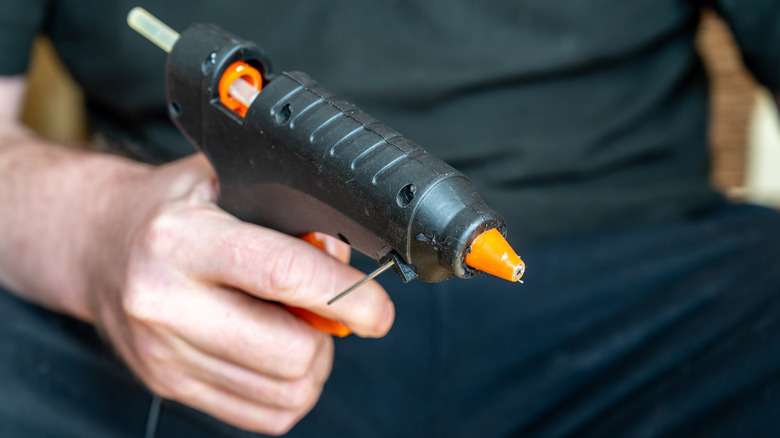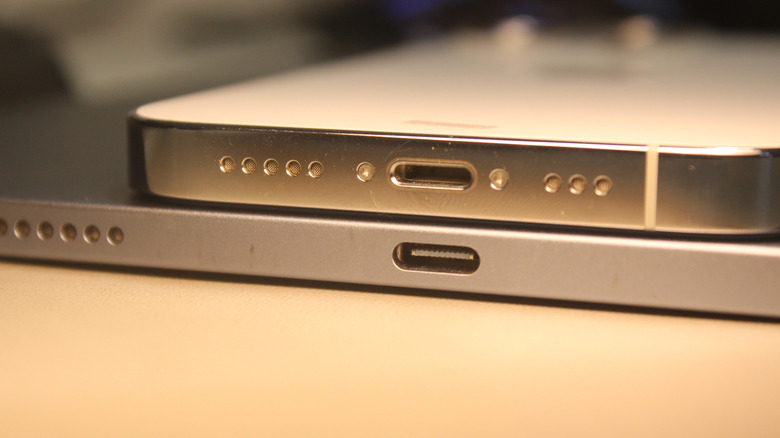Can You Really Use A Hot Glue Gun To Clean Out Your Phone's USB Port?
Despite some obvious drawbacks, most people might agree that the societal impact of mobile phone technology has largely been positive. Such progress always comes with a cost, of course, and apart from the societal and monetary expense of tech like the iPhone 16 Pro, mobile device users can attest to how tedious it can be to keep the devices in clean, working order. In particular, keeping the USB port on those devices dust-free can be a constant source of frustration, as the build-up of dust, dirt, and fuzz can prevent the battery from properly charging, or connecting to other, larger USB equipped gear.
The primary problem is that the port itself is prone to trapping dirt and grime, which is itself the result of time spent tucked inside the pockets and purses of users. In any case, once dirt gets trapped in a USB port, it's exceedingly difficult to remove. Some folks have even taken extreme measures to remove the buildup from their device's USB port, including a handful of social media sorts whose cleaning hack requires the use of a hot glue gun.
Yes, some people are indeed using a hot glue gun like Ryobi's arts & crafts game-changer to clean the USB ports on their devices. And if the social media posts are true, the hack can actually work. It is not recommended, however, as the procedure can cause more damage than good, potentially compromising the device's internal workings and even its resistance to water.
There are safer ways to clean your phone's USB port
Along with the clear potential to cause irreparable internal damage to the device, it's also possible that some of the glue could dry and get stuck inside, leaving you with a bigger chunk of debris to deal with that may be even harder to remove. Frankly, the risk of using a hot, quick-drying adhesive may not be worth the reward, as there are better, less invasive ways to clean a USB port.
One of those methods includes the use of compressed air to blow the collected dust and debris away. This method requires little more than spraying a can of compressed air into the port to loosen and remove any collected debris. This method is preferable to blowing the dust away with your mouth, as it does not introduce moisture into the port. Likewise, it's advised that you spray the air in with short bursts, and at an angle to ensure you're not applying too much direct force.
Apart from compressed air, you might consider jamming something into the port to clean out the dust. While this is a suitable method for cleaning a port, it's important not to use metallic objects like a paper clip for the job, as anything that can conduct electricity may short the device out. A wooden or plastic toothpick should suffice, with the user gently using it to scrape dust and debris from inside. You can further clean the port by fitting a toothpick with a cotton swab lightly dampened with isopropyl alcohol, which should remove any leftover debris or sticky residue.

